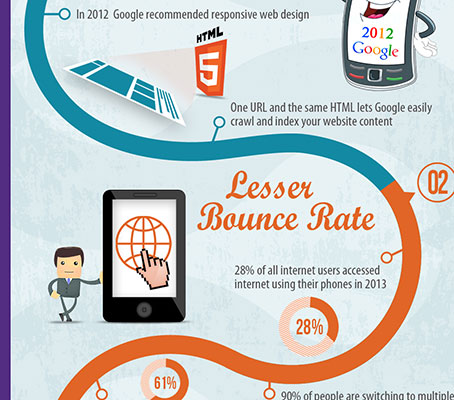Prepare Yourself To Journey Through Time And Find How Web Sites Have Become Much More Sophisticated, Easy To Use, And Visually Stunning
Prepare Yourself To Journey Through Time And Find How Web Sites Have Become Much More Sophisticated, Easy To Use, And Visually Stunning
Blog Article
Produced By-Bradshaw Stender
In the past, web sites were straightforward and focused on details. Navigation was straight, and layout was for desktops. Now, customer experience is crucial. https://contentmarketingvideo17284.blogsmine.com/26889764/comprehensive-website-design-crafting-digital-experiences-for-everybody overviews layouts for very easy navigation. Receptive formats match various gadgets. Today, dark setting reduces pressure, and minimalist food selections enhance navigating. Interactive attributes engage individuals, and bold visuals stick out. AI integration improves interaction. See exactly how design has actually advanced to improve your online journey.
Very Early Days of Web Design
In the early days of website design, simpleness preponderated. Websites were fundamental, with minimal colors, fonts, and layouts. The focus got on providing info rather than fancy visuals. Users accessed the web through sluggish dial-up connections, so speed and performance were vital.
Navigation menus were straightforward, generally located on top or side of the page. Web sites were made for computer, as mobile browsing wasn't yet prevalent. Material was king, and designers focused on easy readability over intricate style components.
HTML was the primary coding language utilized, and developers had to function within its constraints. Animations and interactive functions were very little contrasted to today's standards. Websites were static, with little dynamic material or customized customer experiences.
Surge of User-Focused Design
With the evolution of internet site style, a change in the direction of user-focused style concepts has come to be progressively prominent. Today, producing web sites that focus on customer experience is important for involving visitors and accomplishing service objectives. User-focused layout entails understanding the requirements, preferences, and actions of your target audience to customize the web site's format, content, and features appropriately.
Developers currently carry out complete research study, such as user surveys and use testing, to gather understandings and feedback directly from users. This data-driven strategy assists in creating user-friendly navigating, clear calls-to-action, and aesthetically attractive user interfaces that resonate with site visitors. By placing the customer at the facility of the design procedure, websites can supply an extra customized and enjoyable experience.
Receptive design has actually also emerged as a key facet of user-focused layout, making sure that websites are optimized for various tools and display dimensions. see here improves ease of access and functionality, dealing with the diverse ways customers engage with sites today. Basically, the increase of user-focused style symbolizes a change in the direction of producing digital experiences that focus on the requirements and expectations of the end individual.
Modern Trends in Website Design
Discover the current trends shaping website design today. One noticeable fad is dark mode design, providing a sleek and modern-day appearance while minimizing eye strain in low-light environments. One more essential pattern is minimal navigation, streamlining menus and enhancing user experience by concentrating on essential elements. Incorporating micro-interactions, such as computer animated buttons or scrolling effects, can produce a much more interesting and interactive website. Receptive style continues to be essential, ensuring seamless customer experiences throughout numerous devices. Additionally, making use of vibrant typography and unbalanced designs can add aesthetic rate of interest and draw attention to details content.
Incorporating AI technology, like chatbots for customer assistance or individualized recommendations, improves individual engagement and streamlines processes. Ease of access has also end up being a significant fad, with developers prioritizing comprehensive layout techniques to deal with varied individual requirements. https://seoongoogle76421.thenerdsblog.com/31920894/creating-an-internet-site-from-scratch-a-thorough-hosting-walkthrough by maximizing site efficiency for rate and performance is one more arising fad in website design. Collaborating with individual responses and information analytics to repeat and boost layout continually is vital for staying relevant in the ever-evolving electronic landscape. By accepting these modern-day fads, you can create an aesthetically attractive, easy to use website that resonates with your target market.
Final thought
As you assess the development of website design from the very early days to now, you can see just how user-focused design has ended up being the driving pressure behind contemporary trends.
Embrace the journey of adjustment and adaptation in website design, always maintaining the customer experience at the center.
Keep present with the current fads and innovations, and never ever quit advancing your method to create aesthetically stunning and easy to use web sites.
Evolve, adjust, and create - the future of web design remains in your hands.
